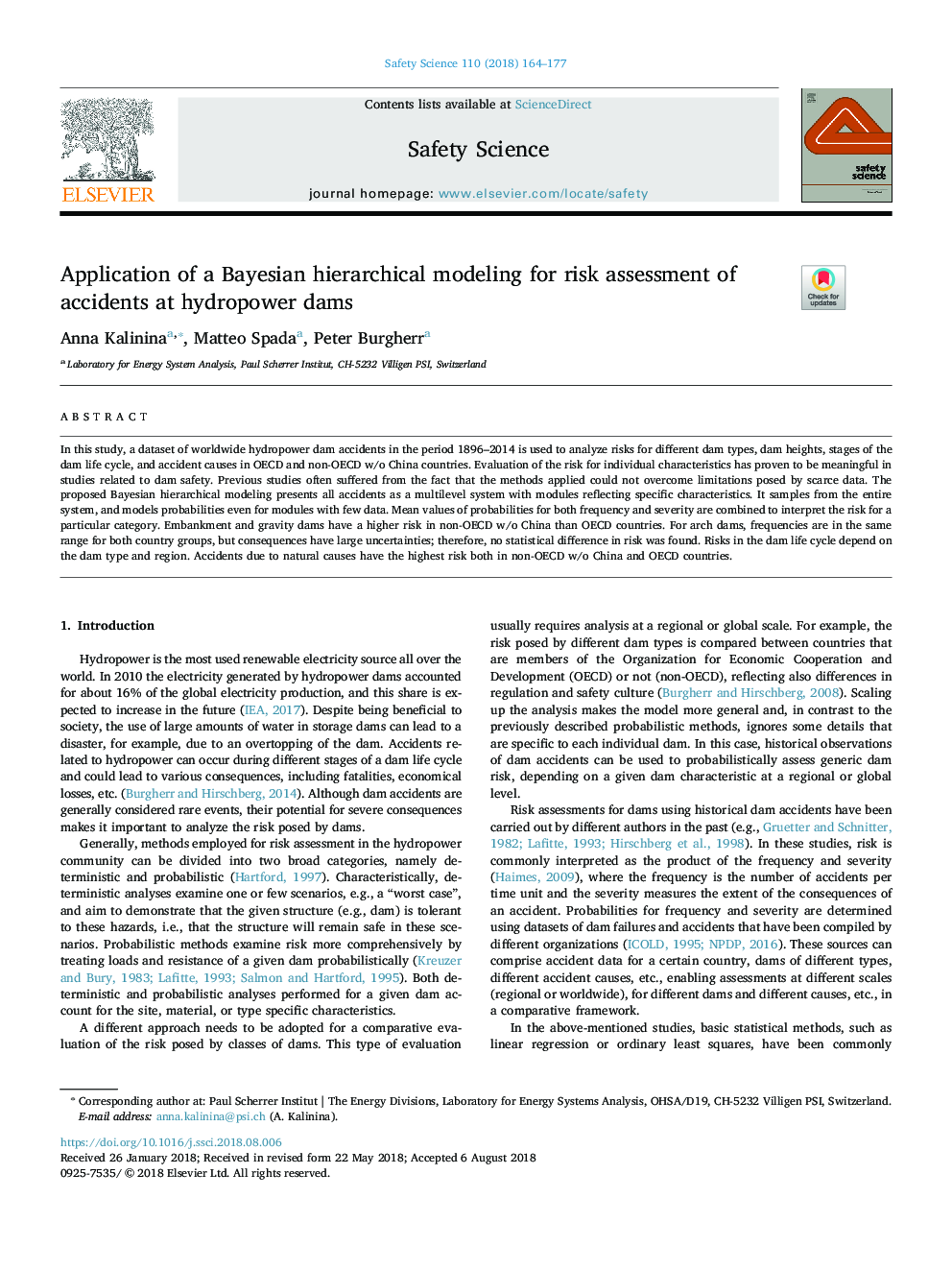| Article ID | Journal | Published Year | Pages | File Type |
|---|---|---|---|---|
| 11003083 | Safety Science | 2018 | 14 Pages |
Abstract
In this study, a dataset of worldwide hydropower dam accidents in the period 1896-2014 is used to analyze risks for different dam types, dam heights, stages of the dam life cycle, and accident causes in OECD and non-OECD w/o China countries. Evaluation of the risk for individual characteristics has proven to be meaningful in studies related to dam safety. Previous studies often suffered from the fact that the methods applied could not overcome limitations posed by scarce data. The proposed Bayesian hierarchical modeling presents all accidents as a multilevel system with modules reflecting specific characteristics. It samples from the entire system, and models probabilities even for modules with few data. Mean values of probabilities for both frequency and severity are combined to interpret the risk for a particular category. Embankment and gravity dams have a higher risk in non-OECD w/o China than OECD countries. For arch dams, frequencies are in the same range for both country groups, but consequences have large uncertainties; therefore, no statistical difference in risk was found. Risks in the dam life cycle depend on the dam type and region. Accidents due to natural causes have the highest risk both in non-OECD w/o China and OECD countries.
Related Topics
Physical Sciences and Engineering
Chemical Engineering
Chemical Health and Safety
Authors
Anna Kalinina, Matteo Spada, Peter Burgherr,
